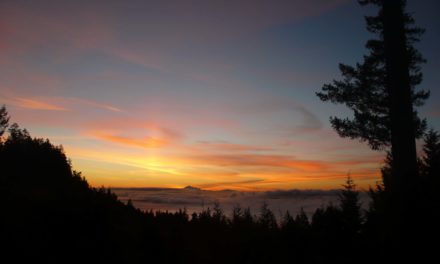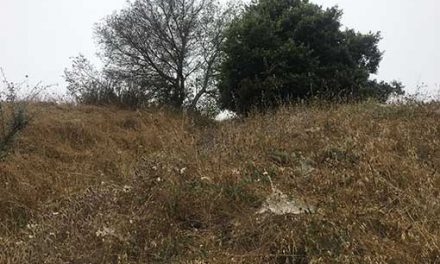Something to keep in mind‚
Out, out, brief candle.
…
Life’s but a walking shadow,
…
that struts and frets his hour upon the stage
…
and is heard no more.
..
William Shakespeare
.

What Climate Change Tells Us about Being Human
Scientific American 12-29-19
The climate crisis requires us to rethink our ideas about what it means to be human. Even post-Darwin Western culture assumes that humanity has the unique capacity to control nature. Yet with some contradiction people also argue that “human nature” leads us inexorably to cause climate change. Both these ideas can’t be true at once, and indeed they are not. They are instead ideological fictions, received stories that people experience collectively as truths. They serve to make the world as it is seem normal. But in so doing they prevent us from fully accepting the implications of climate change and from understanding how we can act differently, rebuilding the world in order to save some of it for our children. …
Climate change exposes this imagined future to be a profound illusion. It shows that in geological time and space, we have not transcended our materiality at all. We are fully embedded in and intertwined with Earth’s planetary systems as a species. And that we have the power to change the composition of the climate system doesn’t mean that we have some special dispensation to make and remake worlds. The oxygen that enabled Earth to bear life was first excreted as waste by bacteria. Nothing could be more lowly than that. We are doing what bacteria do, heating the climate system with our waste, while also driving mass extinction by destroying local biospheres and filling the liquid parts of our planet with plastics. And now this desecration turns back on us, threatening our own existence. No longer under our foot, nature has encompassed us all along.
As a species intertwined with and radically dependent on our planetary system, do we also, then, have a fixed nature as, say, snakes or trees do?
Greta Thunberg Offers Advice to Young People, Dismisses Climate-Denying Politicians in BBC Radio Program
Common Dreams 12-30-19
As millions of young people did as they prepared to march in the Global Climate Strike in September, people Thunberg’s age must help convince the adults in their lives to fight alongside them.
“Speak to your parents,” she said. “Put pressure on your parents and the other adults around you.” …
Above all, Thunberg said, convincing politicians to make the policy changes necessary to protect the Earth for future generations—instead of remaining beholden to fossil fuel corporations—will take an engaged global citizenry.
“Read up. Inform yourself about the actual science and situation,” she said. “Be an active democratic citizen. Of course to vote, but also to be active, because democracy is not only on election day, it’s happening all the time.”
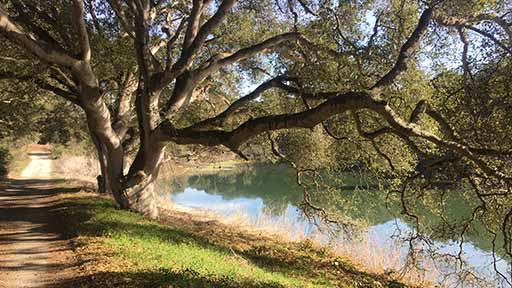
HOTAIR NEWS ROUNDUP
This Week’s Highlights
After marathon U.N. climate talks, disappointment and no deal on carbon markets
LA Times 12-15-19
Marathon United Nations climate talks ended Sunday with a slim compromise that sparked widespread disappointment, after major polluters resisted calls for ramping up efforts to keep global warming at bay and negotiators postponed debate about rules for international carbon markets for another year.
Organizers kept delegates from almost 200 nations in Madrid far beyond Friday’s scheduled close of the two-week talks. In the end, negotiators endorsed a general call for greater efforts to tackle climate change and several measures to help poor countries respond and adapt to its effects.
U.N. Secretary-General António Guterres said he was “disappointed” by the meeting’s outcome.
“The international community lost an important opportunity to show increased ambition on mitigation, adaptation and finance to tackle the climate crisis,” he said. “We must not give up, and I will not give up.”
A Call to Action as Planet’s Essential Groundwater is Being Rapidly Depleted
Common Dreams 12-29-19
Abhijit Mukherjee, who is a part of the global scientist group and an Associate professor at Indian Institute of Technology (IIT) Kharagpur told the Press Trust of India “we, in India, are abstracting the largest volume of groundwater in human history and are rapidly depleting a relatively non-renewable natural resource that is essential for our survival.”
California, climate change and the trauma of the last decade
LA Times 12-26-19
The wildfires were more destructive. The drought was the longest on record. And the storms, when they finally came, unleashed more water than our dams could contain.
To live in California over the last decade has meant enduring a steady procession of weather-related disasters, each one seemingly worse than the last.
Five of the 10 largest fires in state record books have occurred since 2010. So has California’s third driest year since 1895, as well as its third wettest year since 1895, according to the Western Regional Climate Center. In 2015, the Sierra snowpack — the source of one-third of the state’s fresh water — reached its lowest level in 500 years.
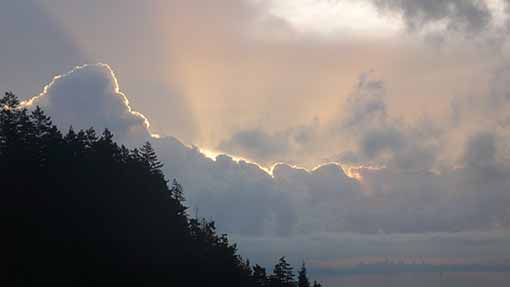
ADAPTION AND RESILIENCE
How Cruise Ships Bring 1,200 Tons of Toxic Fumes to Brooklyn a Year: Many ports — all along the coast of California, in parts of Europe, even in China — have found a solution to idling luxury liners. In New York, they’re still a problem.
NYT 12-26-19
“Well, that’s good,” he finally said. “That’s the way it should have been for the last decade since they built this thing.”
“This thing” is the $21 million plug-in station that Mayor Michael R. Bloomberg and the Port Authority of New York and New Jersey agreed to introduce in Red Hook several years ago in an effort to eliminate 1,200 tons of carbon dioxide, 25 tons of nitrous oxide and tons of hazardous particulate matter spewed out each year by cruise ships idling off Brooklyn’s coast.
When not using shore power, a single cruise ship docked for one day can emit as much diesel exhaust as 34,400 idling tractor-trailers, according to an independent analysis verified by the Environmental Protection Agency. When a ship is plugged in, the agency said, its exhaust is nearly eliminated.
But the system has hardly been used after going into operation in 2016. And New York City is expected to announce design plans next year that would expand and modernize terminals in Brooklyn and Manhattan to accommodate the world’s largest cruise ships, and more of them.
Yet there is no plan to further expand the shore power system.
Capturing CO2 from trucks and reducing their emissions by 90%
Science Daily 12-23-19
In Europe, transport is responsible for nearly 30% of the total CO2 emissions, of which 72% comes from road transportation. While the use of electric vehicles for personal transportation could help lower that number, reducing emissions from commercial transport — such as trucks or buses — is a much greater challenge.
Researchers at EPFL have now come up with a novel solution: capturing CO2 directly in the trucks’ exhaust system and liquefying it in a box on the vehicle’s roof. The liquid CO2 is then delivered to a service station, where it is turned into conventional fuel using renewable energy. The project is being coordinated by the Industrial Process and Energy Systems Engineering group, led by François Maréchal, at EPFL’s School of Engineering.
Flagship reactor launch postponed again
Climate News Network 12-29-19
The edifice already heading for the status of the largest and most expensive construction project in the world, the Hinkley C nuclear power station in the UK, is dragging its builder, the French giant EDF, into ever-deeper debt: the company’s flagship reactor is facing still more delay.
Although EDF is a vast company, owning 58 reactors in France alone, and is 85% owned by the French state, it owes around €60 billion ($67bn), a debt expected to increase by €3 billion ($3.35bn) a year.
This has led some city analysts, notably S&P Global, to downgrade the company’s prospects to “negative” − which is essentially a recommendation to shareholders to sell.
Apart from the problem that EDF’s fleet of reactors in France is operating well beyond their original design life and are in constant need of safety and maintenance upgrades, the company’s main problem is its flagship, the European Pressurised Water Reactor (EPR), which is getting into ever-greater difficulties.
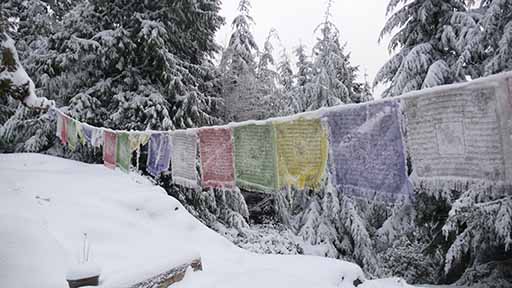
LEGISLATION, ELECTIONS & POLICY
More Climate Lawsuits Could Spur Federal Legislation and a Just Transition
Truthout 12-28-19
The Honolulu City Council chamber was rife with indignation and grief at a November 12, 2019, hearing, as residents urged the city council to vote to move ahead with suing oil companies to seek compensation for the growing cost of mitigating climate crisis conditions on the island. The list of defendants includes ExxonMobil, Shell and Chevron. Teenage activists, labor union reps, religious leaders, retirees, mothers-to-be, and others lined the walls of the room, ready to approach the podium for a minute each of testimony.
“We are every day inundated with climate change,” Mike Leary, who has run a demolition and auto safety inspection business in Honolulu for 35 years, told the seven Honolulu council members in attendance. Leary said he’s lost countless clients because the street near his business in the northwest industrial neighborhood of the city floods so regularly. “How would you like to wear rubber boots to come to work because your carpet is wet and mold is growing on the walls?”
.

THE FIRES
Australia fires: A visual guide to the bushfires and extreme heat
BBC 12-31-19
Around 100 fires are burning across the state, with up to half as yet uncontained by firefighters and continuing to threaten lives. The fires have been exacerbated by 40C temperatures and strong winds, creating difficult conditions for the 2,500 firefighters deployed in the field. The small town of Balmoral, south-west of Sydney, was largely destroyed and scores of homes were razed amid catastrophic conditions on 22 December. In northern NSW large fires are burning in the region between Port Macquarie and Byron Bay. In the countryside to the west of Sydney, there are fears that the vast Gospers Mountain fire, which originated in the Wollemi National Park, may merge with the Green Wattle Creek blaze in the lower Blue Mountains.
The fire in the Blue Mountains, a world heritage area and popular tourist destination, has burnt over 64,000 hectares, though much of it is now being controlled, according to the NSW Rural Fire Service. Fire crews in the region took advantage of cooler conditions last week to perform ‘back burning’, where small areas are deliberately burned to create breaks to stop or slow the main fire.
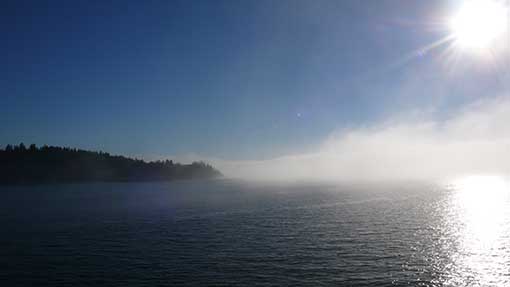
THE ARCTIC
Submarine to explore why Antarctic glacier is melting so quickly
The Guardian 12-28-19
Once they get the green light, the scientists will use a hot water drill to bore a 30cm-wide hole through the ice shelf. The equipment can melt a hole at about 1.5 metres per minute, meaning it will take more than six hours of nonstop drilling to get all the way through. Small teams who sleep overnight in tents on the ice will work in rotation around the clock to drill the hole, deploy the submarine, and set other instruments into the borehole for long-term monitoring.
“Nobody has ever been able to drill through the ice close to where it starts to float and that is the critical point,” Vaughan told the Guardian. “If everything goes to plan, they will drill the hole and then ream it out until it’s about 50cm across, and then lower in the autonomous underwater vehicle. That will actually go into the cavity and send back images in real time so they can navigate it right up to the point where the ice starts to float.”
The 3.5 metre-long icefin carries high definition cameras, sonar, and instruments for monitoring water flow, salinity, oxygen and temperature. These can determine how much fresh water is flowing out from under the ice shelf. The robotic sub will also sample the gritty sediment shed into the water as the glacier grinds over the slab of rock it sits on. The data will feed into computer models to refine predictions about the fate of the glacier and the magnitude of sea level rise its melting will produce.
Intense heatwaves causes Swiss glaciers to melt
Decan Chronical 10-16-19
Switzerland’s glaciers have lost a tenth of their volume in the past five years alone — a melting rate unmatched during observations stretching back more than a century, a study showed Tuesday. Measurements on 20 Swiss glaciers have shown that melt rates this year have reached “record levels”, according to the annual study on the state of the glaciers, published by the Cryospheric Commission at the Swiss Academy of Sciences.
The study, released amid growing global alarm over climate change, found that intense heatwaves over the summer in Switzerland had dashed hopes that an exceptionally snow-filled winter would limit the glacier melt this year.
9 timely readings on the status of permafrost
Yale Climate Connections 12-23-19
Every December, NOAA releases its annual Arctic Report Card. Because that release coincides with and is one topic at the annual meeting of the American Geophysical Union, its consistently “bad news” is followed by equally reliable good press coverage, even though the data does not always vary much year-to-year.
One element of the 2019 Arctic story involves the warming of the permafrost, the frozen soils that cover nearly a quarter of the northern hemisphere’s land.
The short permafrost section of this scientific report offers good insights. For a fuller view of the basic situation [follow the links in the article.
FOSSIL FUELS
What’s Behind Big Oil’s Promises of Emissions Cuts? Lots of Wiggle Room
Inside Climate News 12-30-19
The oil and gas industry seems to have entered a state of cognitive dissonance. Like never before, energy companies are publicly acknowledging the threat posed by climate change and the need for society to reduce greenhouse gas emissions. At the same time, oil and gas production in the U.S. and globally continues to soar. …
Instead, the world is on track to produce more than 40 percent more oil and gas by 2040 than would be consistent with the Paris goal of limiting warming to less than 2 degrees Celsius, a United Nations report published in November found. Another recent report, published by the climate and financial think tank Carbon Tracker Initiative, found that the largest investor-owned oil companies had recently invested billions in new projects that are not consistent with that goal.
If all that oil and gas is produced as planned, dangerous levels of warming become likely, if not a sure bet.

WILDLIFE & THE ENVIRONMENT
Thousands of Koalas Feared Dead in Australia Wildfires
Common Dreams 12-28-19
Last year, a World Wide Fund for Nature (WWF) Australia report said there were fewer than 20,000 koalas left in New South Wales and they risked becoming extinct as early as 2050, largely because of “excessive tree-clearing for farming.” Minister Ley said up to 30% of the koalas in the region had been killed in recent days.
Australia has just endured a heatwave that broke records for highest temperature ever for consecutive days. And the fires accelerated on Saturday in the country’s east as temperatures soared.
“I think this is the single loudest alarm bell I’ve ever heard on global heating,” said Kees van der Leun, a director at the American consultancy firm Navigant.
Rest Of Earth’s Inhabitants Vote To Phase Out People By The Year 2040
Outabouter 11-4-19
In a move that has been expected by everyone other than humans for quite some time, the rest of life on Earth today voted to do what has to be done to save the planet, deciding in a unanimous decision to phase out people over the next 20 years.
The consensus was reached at the 3,487,562,490th annual global convention for multi-cellular organisms – an event that humans have been invited to but have yet to attend; citing an obscure religious text that they believe provides them with dominion over everything, but which is unrecognized by the rest of the planet’s co-occupants.
“I will not lie,” said a large bear, rising in the small hotel conference room just outside of Newark, New Jersey, which the flora and fauna have had to rent the past few years after finding their natural habitats decimated by the preternaturally destructive people.
“The surplus of garbage and warmer winters have been nice. But I can no longer lick a creek without tasting the mercury, and even now my bowels contain parts of a large yogurt container, three pairs of Ray Bans, a Nokia, and a small figurine I believe was originally meant to resemble the popular television character ‘Peppa Pig,’ but now just looks like a very large wad of gum with legs.
“In any event,” the bear continued, after biting into a complimentary donut. “My home has been logged, my rivers dammed, and my photo taken – badly I might add – without my permission. The people must go. I speak for all bears. As well as our cousins the raccoons, who were unable to attend this year’s meeting due to being deeply embedded in the human tribe, awaiting the order to eat all of the people’s car keys, thus beginning the end of their species.”
Climate change not the only threat to vulnerable species, habitat matter — Madagascar’s rainforest could be lost this century, threatening endangered lemurs
Science Daily 12-23-19
Though climate change is becoming one of the greatest threats to the Earth’s already stressed ecosystems, it may not be the most severe threat today for all species, say authors of a new report on the effects of deforestation on two lemur species in Madagascar.
How do conifers survive droughts? Study points to existing roots, not new growth — Scientists can’t see underground, but computational models are providing a new way to investigate how root systems might be changing
Science Daily 12-30-19
As the world warms, a new study is helping scientists understand how coniferous forests may respond to drought. The research addresses a classic question in the field: When conditions are dry for long periods of time, do trees survive by growing new roots to tap water sources, or by relying on established roots that already go deep?

PROTESTS • EXTINCTION REBELLION • RESISTANCE
Fridays for Future
A Year Of Resistance: How Youth Protests Shaped The Discussion On Climate Change
DeSmog Blog 12-28-19
Thunberg coined the hashtag #FridaysforFuture in August 2018, inspiring students globally to hold their own climate strikes. Many of them argued that adults were not doing enough to address the climate catastrophe. Today’s youth saw themselves on the generational front lines of climate change, so they walked out of their schools to demand transformative action. …
Fridays for Future now estimates that more than 9.6 million strikers in 261 countries have participated in climate strikes. And Thunberg herself has met with hundreds of communities and numerous heads of state. While Thunberg’s celebrity has paved the way for the climate strikes to scale up — her work rests on decades of climate activism that have made this year’s mobilizations possible.
Greta Thunberg
When Greta Thunberg met Sir David Attenborough
BBC 12-30-19
Greta Thunberg and Sir David Attenborough have met for the first time (via Skype as they did not want to add to their carbon footprints) to discuss the climate crisis and share their thoughts on how to make an environmental impact.
Greta, who spoke to Sir David from Stockholm, is guest editing the BBC’s Today programme on Monday 30 December.
[video: https://www.youtube.com/watch?v=tmrFUVOOR14]
Extinction Rebellion
JOIN XR USA: on their website
XR NEWSLETTERS & EVENTS: on their website
XR USA: on YOUTUBE
NEW XR TRUTH TELLER SITE: on TRUTH TELLER.LIFE
Calling all concerned Citizens: Tell the world what you know‚
Humanity has the know-how to avert catastrophic climate and ecological breakdown. Yet we’re failing to heed the scientific warnings and put them in place. Why aren’t we adopting emergency measures the world over? And what are the near-term consequences of inaction? Do you know something that would help reveal what’s really going on?
Extinction Rebellion stages air pollution protests in London and Manchester
The Guardian 12-9-19
Climate change activists wearing gas masks have blocked a central London road to demand the next government tackles “deadly levels of air pollution” in the capital. Six Extinction Rebellion protesters dressed in hi-vis suits glued their hands to yellow breeze-blocks in the middle of Cranbourn Street, outside Leicester Square tube station. The demonstration, called The Air We Grieve, involved 25 cement blocks the activists said represented the number of Londoners who die each day as a result of air pollution. A van parked sideways next to them was emblazoned with a sign reading: “Air Pollution Kills 25 Londoners Each Day”. Police later arrived in the street, which protesters said has dangerously high levels of air pollution.
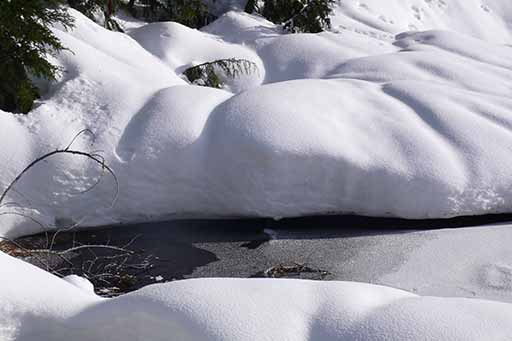
CLIMATE STUDIES
SFU research points to unprecedented and worrying rise in sea levels
EurekAlert 12-23-19
A new study led by Simon Fraser University’s Dean of Science, Prof. Paul Kench, has discovered new evidence of sea-level variability in the central Indian Ocean.
The study, which provides new details about sea levels in the past, concludes that sea levels in the central Indian Ocean have risen by close to a meter in the last two centuries.
Prof. Kench says, “We know that certain types of fossil corals act as important recorders of past sea levels. By measuring the ages and the depths of these fossil corals, we are identifying that there have been periods several hundred years ago that the sea level has been much lower than we thought in parts of the Indian Ocean.”
He says understanding where sea levels have been historically, and what happens as they rise, will provide greater insights into how coral reefs systems and islands may be able to respond to the changes in sea levels in the future.
North Atlantic Current may cease temporarily in the next century
EurekAlert 12-30-19
Simulations by scientists from the University of Groningen and Utrecht University showed that it is unlikely that the current will come to a complete stop, due to small and rapid changes in precipitation over the North Atlantic. …
A temporary interruption in the delivery of relatively warm water to north-western Europe is more likely: ‘In our simulations, the chances of this happening in the next 100 years are 15 percent.’ Such temporary transitions may cause cold spells in the North Atlantic, although this needs to be verified in further studies. Therefore, the current study is just a first step in determining the risk. The model does not take into account considerable changes in freshwater in the North Atlantic, which can be caused by the melting of the ice sheets. Wubs: ‘Confirming our results through simulation with a high-resolution climate model will be the next challenge.’
Global Warnings
QMS: Time to disconnect greed from the welfare of earth, if survival means anything. I like trees.
Paul Beckwith: “I declare a global climate change emergency to claw back up the rock face to attempt to regain system stability, or face an untenable calamity of biblical proportions.”
Kevin Hester: “There is no past analogue for the rapidity of what we are bearing witness to. There has been a flood of articles … 2C is no longer attainable and that we are heading for dangerous climate change”
Magi Amma: We need to turn on a dime at mach nine!
Equivalencies:
1 gigatonne = 1 billion tons
1 gigatonne Carbon = 3.67 gigatonnes CO2
1 part per million (ppm) of atmospheric CO2 = 7.81 gigatonnes CO2
1 part per million of atmospheric carbon = 2.13 gigatonnes of carbon



